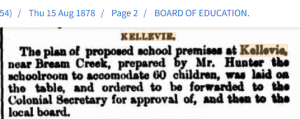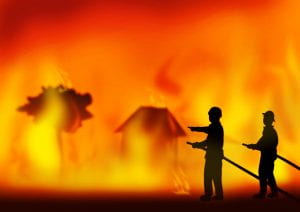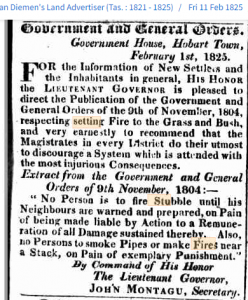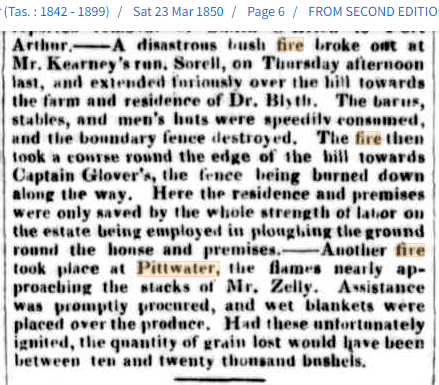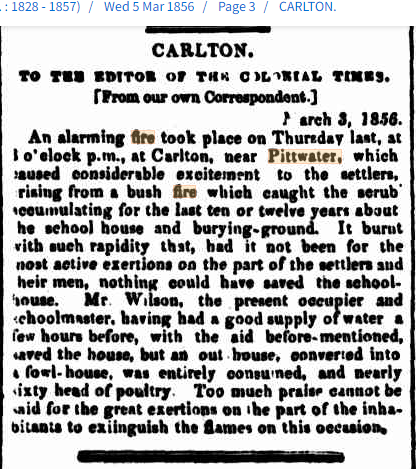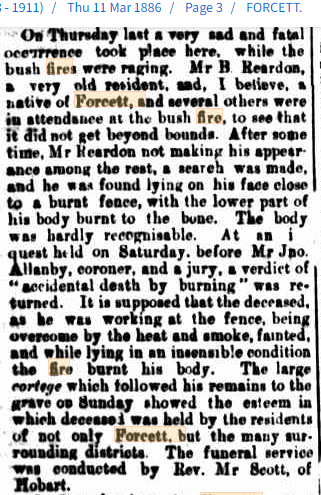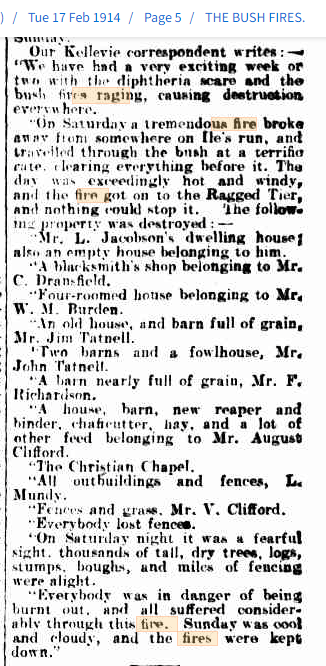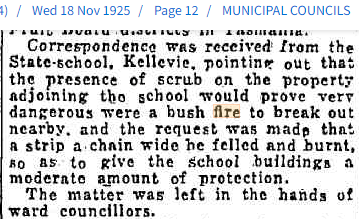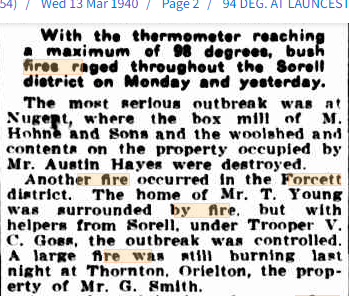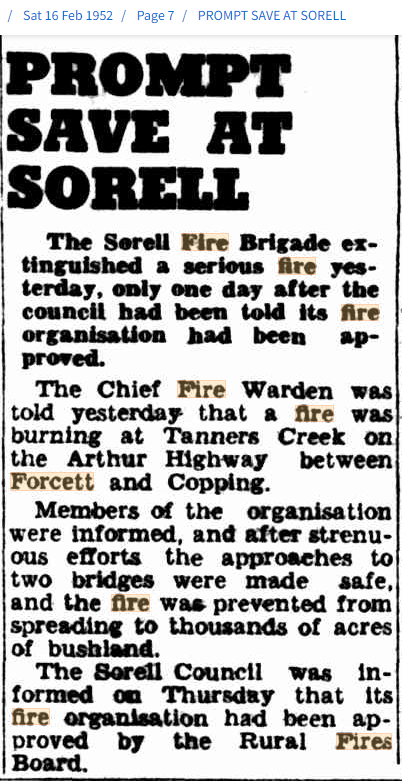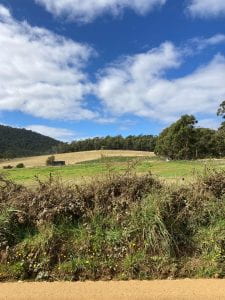
Kellevie is a rural area in the municipality about 28 kilometres east of Sorell. Looking at newspapers mentioning Kellevie, it has certainly changed over time. Before I began the research for this post, I thought Kellevie was a very small place in the back hills of Sorell. I now have a different view of the history of the area. Blue links take you to newspaper articles to read.
In 1853, there was 280 acres of land leased to John Picken in the parish of Kellevie.
In 1862, in the local newspaper Kellevie was mentioned as being in the County of Pembroke and that it was a parish in the area called Carlton Scrub along with Nugent and Canning parishes. It was listed as agricultural land.
In 1871, Kellevie is mentioned often under Crown Lands for rent. Here are some examples of how the land is described by Mr Crawford:
Stony forest land ; steep hills in part, coarse herbage throughout. Not capable of much improvement. Carrying capacity-300 sheep.
Rocky tier land, chiefly, eastern frontage. Rough she-oak hills with coarse edgy flats here and there. Soil poor. Not capable of much improvement. Carrying capacity-200 sheep.
By August 1878, plans were afoot for a school at Kellevie.
Tenders were out by October 1878 and specifications could be viewed at Rochfort Hall, Upper Carlton, the home of Richard Copping, a well known whaling captain.
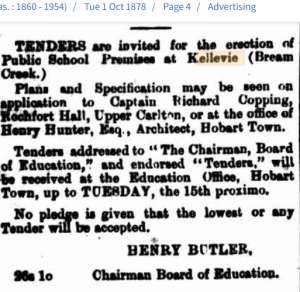
November 1878 saw a very detailed description of Kellevie in the local paper. Mention of the many families in the area.
First school master appointed in 1879. But just over a year later the school is shut and the master removed. Why? A new appointment has been made.
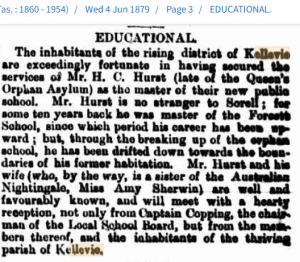
- Even in 1881, teachers were moved around a lot, but in a five year period all head teachers had been promoted from the Sorell district.
- By August 1882, just four years after being built, tenders were out for repairing the school premises at Kellevie. By November that year, it was ready to be started and they asked the Board of Education for a fortnight’s holiday while the repairs were done.
- In August 1883, whooping cough was prevalent among the students and the school was closed for a week.
- A letter to the editor mentioned the Kellevie school in November 1883, and the teachers held a tea in the evening for students and parents on the day school closed for Christmas holidays.
- June 1884 where Matthew Burnett lectured on temperance to a very large crowd at Kellevie.
- August 1884 the school was averaging 60 children each day with Mr and Mrs Miller still in charge.
- The annual tea meeting in December 1884 includes names of many prize recipients. December 1885
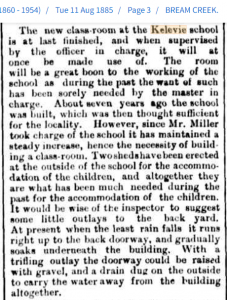
- Discussion of postal service in Coppington and Forcett area including Kellevie.
- Students mourn death of a school friend at Kellevie in February 1886.
- The schoolmaster and mistress Mr and Mrs Miller moved to Bothwell. Farewell meeting at the schoolhouse in July 1886.
- Mr Downie is the new schoolmaster in August 1886 and more trouble re the postal service.
- Discussion about opening up roads to Kellevie to allow produce to get to Dunalley more easily.
- Upper Carlton now officially known as Kellevie through the Post Office.
- Fantastic article with names of children receiving prizes at the Christmas tea meeting in 1886.
- School numbers still growing, so Captain Copping helps again. But what about the Government?
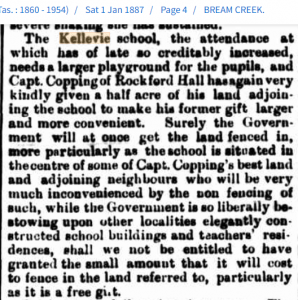
- Problems with divine service being held in school buildings.
- May 1887 a large gathering for a presentation to Rev Alex Doctor and Mrs Captain Richard Copping.
- A parent from the Kellevie community wrote a letter to the paper regarding the surroundings of the school.
- In August 1887, Reverend Alex Doctor is moved on to a church in Bothwell.
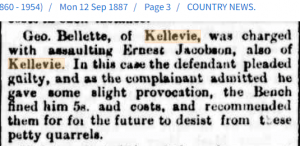
- A concert in November 1887 to raise money for school prizes. The program with names is also printed in the paper.
- Love one of the prizes for the end of 1887 – distance walked to school over the year
- Annual feast and prize giving including names for the Kellevie Sunday School. 1888 prizegiving
- January 1888, a surprise presentation to Captain Copping.
- Typhoid fever and school boundaries in March 1888.
- Governor visits the school in July 1888.
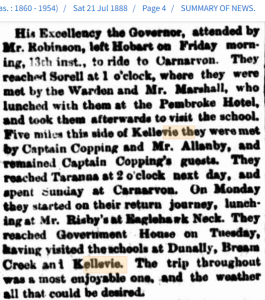
- New road to the school nearing completion.
- The farm of Mr T Cleary has great yields of hay and oats.
- Kellevie is a great place for picnics.
- May 1889 thoughts of a road between Kellevie and Weedy Hills. Also maybe the railway could be extended towards this part of the municipality.
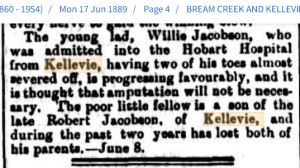
- Lady Hamilton visits Kellevie school and a great description written up by the correspondent for the local paper. She also presented prizes for the end of the year.
- Boy’s cricket teams between local schools. Dunalley defeated Kellevie in the first match but the reverse in the second match.
- Poor school attendance due to illness in the area.
- The school master Mr Downie was promoted to Scottsdale school.
- What is attacking the sheep?
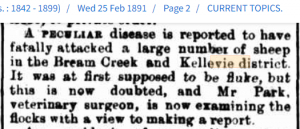
- Lecture about ‘Man the animal’ by Mr Whyte, the new school master, June 1891
- Death of local Mr T.C Tatnell. Flag flown half mast at Rochford Hall.
- New place of worship opened at Kellevie.
- October 1891 larrikinism noted at Kellevie.
- Contractor from Kellevie passes forged cheque in Hobart.
Readers: Which of the above newspaper articles did you enjoy the most or find the most interesting? Do you know how the parish got the name Kellevie prior to 1853 article in the paper?
